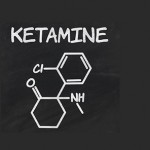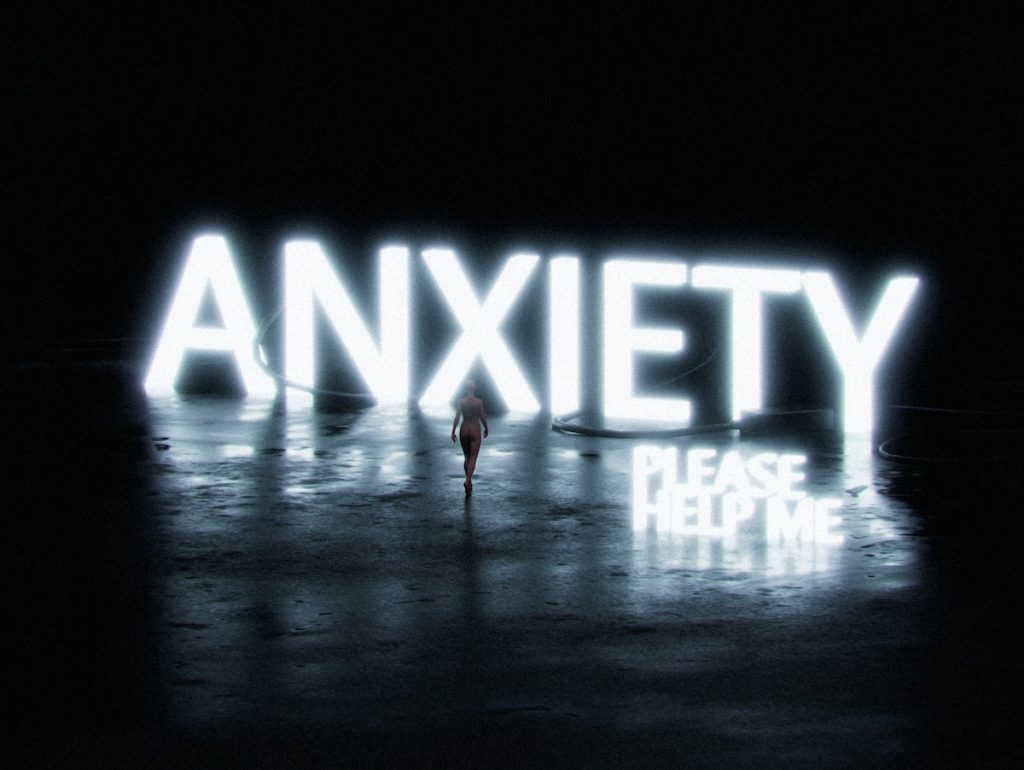
One in 6 adults in the UK has a common mental health disorder such as anxiety and depression (McManus et al, 2020). The COVID-19 pandemic has resulted in an 8.1% increase in common mental health disorders in the UK (Banks & Xu, 2020), shifting the focus to digital treatment. Digital interventions have gained popularity, perhaps not only due to their convenience and accessibility to the masses, but also the possibility that well-established effects of traditional mental health interventions may be starting to decline (Johnsen & Friborg, 2015).
Hull et al. (2022)’s research rationalises that other approaches that can expand access and improve outcomes of therapies for anxiety and depression should be further investigated. This study focuses on digitally-delivered ketamine-assisted therapy (KAT) and its viability for improving treatment access.

COVID-19 has led to an increase in common mental health disorders and the necessity of novel therapeutic approaches.
Methods
1,247 individuals with severe anxiety or moderate-to-severe depression who were seeking treatment were recruited as participants for this prospective longitudinal open-label effectiveness design trial. This study took place in the United States.
After informed consent and an emergency contact were obtained, individuals with severe anxiety or moderate to severe depression who met the inclusion criteria completed a 40-60 minute intake session over video. Participants were then sent a 300-450mg single dose of sublingual rapidly dissolving ketamine tablets and given instructions on how to take the medication in a way that reduced nausea and prolonged sedation. Following this, participants completed a mediation session (one hour), a journaling activity (30 minutes) then a 30-minute video meeting with their guide (a certified behavioural coach). This setup formed the KAT portion of the treatment. Two days after the initial session, participants received a second dose followed by a 45-minute interactive session with the guide. After this point, daily communication between the guide and participant was maintained, with symptoms and side effects being monitored. All sessions with the guide were delivered on the telemedicine platform, www.mindbloom.com. The study concluded after four weeks with a 30-minute exit interview.
Participants were measured at baseline, and weekly for depression, anxiety, suicide ideation, alcohol use, substance use, and dissociative symptoms in response to ketamine administration. The outcome measures used were the Patient Health Questionnaire-9 (PHQ-9), Generalised Anxiety Disorder Assessment (GAD-7), Columbia-suicide Severity Rating Scale (C-SSRS), Alcohol Use Disorders Identification Test (AUDIT), Drug Abuse Screening Test (DAST-10) and Clinician-administered Dissociative States Scale (CADSS).
Results
At baseline, 33.4% of patients reported experiencing suicide ideation, 51.2% reported use of drugs in the past 12 months, and 80.9% reported some alcohol use.
By session 4, 63.1% of participants reached a clinically significant change on the PHQ-9 and 63.9% reached a clinically significant change on the GAD-7. Clinically significant change was defined as moving below the clinical threshold (score of less than 10) and improving by at least five points.
Side effects were reported by 4.7% of patients after Session 2, with this proportion decreasing to 3.8% after Session 4.
The vast majority (82.9%) of participants experienced dissociation after Session 2 with this proportion slightly increasing (87.3%) by the end of Session 4. However, the average amount of dissociation experienced by each participant remained relatively stable between the two sessions. KAT led to symptom improvement in all participants due to the dissociative effect of ketamine-aiding psychological practices such as meditation and journalling.

KAT led to symptom improvement due to the dissociative effect of ketamine aiding psychological practices, such as meditation and journalling.
Conclusions
The authors of the study conclude that “KAT offers clinically meaningful improvements and demonstrated a desirable safety and risk mitigation profile”. Ongoing ketamine-based medication sessions enhance therapeutic benefits by preventing the 90% relapse rate that is often seen in single-infusion ketamine-based treatments (Kryst et al., 2020).
Hull et al. (2022) take this standpoint to reiterate the use of dissociative and psychedelic compounds for reducing important symptoms of common mental health disorders such as reducing suicidal ideation and behaviour. This could be viewed as an exaggeration, especially since the mechanism of dissociation is still relatively unknown in terms of how it reduces anxiety and depression symptoms (Liu et al., 2020).

The authors conclude that “ketamine is an important avenue for overcoming long-standing barriers to depression and anxiety treatment”.
Strengths and limitations
A key limitation of the study design is that it did not include a placebo control. Given that all participants were seeking treatment, it is highly likely that the results may be due to a placebo effect rather than any meaningful effect of KAT. This raises an interesting argument, as to whether a combination of pharmacological and psychological treatment is needed.
The authors highlight a high treatment completion rate, yet the study sampled treatment-seeking individuals. Taking into consideration selection bias, it is bold to assume that the completion rate in a treatment-willing sample will translate into a general sample, thus the findings need to be interpreted with caution. Furthermore, individuals who experienced suicidal ideation, a history of trauma or experience with substance abuse were excluded from the study. In other words, a large proportion of people with depression were excluded from accessing a potentially effective treatment that claims to reduce suicide ideation in its conclusion.
Despite its limitations, the study does address a gap in the literature: it takes the promise of ketamine treatments for common mental health disorders from lab-based experiments and applies it to a clinical trial. The authors even boast the study as “the largest study to date on real-world safety and effectiveness of any type of ketamine treatment”. This new scope adds a certain robustness when considering results such as the adverse events for KAT being extremely low despite the large and diverse sample. Systematic reviews have found that ketamine-based treatments (regardless of administration type) can reduce anxiety and depressive symptoms whilst increasing treatment engagement (Drodz et al., 2022; Tully et al., 2022). This is the first study to illustrate such an association between orally administered ketamine and anxiety. This focus on oral administration has many implications for practice such as improving accessibility of treatment at a lower cost than intravenous methods seen in earlier clinical trials.

Further research should consider how ketamine-assisted therapy could be safely and ethically evaluated without excluding people experiencing suicidal ideation.
Implications for practice
Whenever a new treatment is shown to be feasible, it’s easy to immediately suggest that it becomes the new gold standard. However, when considering implications for practice, the effectiveness and feasibility of treatment (though important) is not the only factor at play.
Financial implications
What’s the cost? It’s no secret that there is an ongoing financial strain on the NHS post-pandemic. On one hand, though the study boasts KAT as being 20% cheaper than infusion treatment at $250 per dose; this is not a comprehensive cost. Though the medication itself may be cheap, the added cost of guides to aid the psychological element of treatment and checkup costs needs to be considered. The UK has a very different system of mental healthcare than the US, where private therapy is much more common in the latter. Can the NHS afford these additional costs compared to antidepressants to treat such a prevalent condition? On the other hand, it is important to also consider the fact that the societal economic burden of depression in the UK (because of missed work, use of GP services, and care requirements) is approximately £22,124 (McCrone et al., 2018). Could KAT potentially reduce this cost?
Ethical implications
Is it ethical to promote a common recreational drug as having therapeutic effects when there is such a long way to go in ensuring safe access? This treatment emphasises the role of ketamine alongside psychological support. If there are long waiting lists for this support which delays the drug prescription, are individuals likely to turn towards the illegal acquirement of ketamine in dangerous dosages? Heavy recreational use can escalate to ketamine dependency, with dangerous doses being associated with cognitive and mental disorders (van Amsterdam & van den Brink, 2021). Tully et al. (2022) highlighted one study out of 36 that looked at the potential for abuse and found that in its oral form, this potential is limited. However, van Amsterdam and van den Brink’s systematic review found that heavy ketamine users have a cumulative exposure to ketamine 90 times higher than individuals who use ketamine for clinical treatment. It would be naïve of the psychological community to not think of such consequences before promoting ketamine as a treatment for anxiety and depression.

Recognising the differences between UK/US healthcare, it’s important to consider the feasibility of offering ketamine-assisted therapy in the NHS.
Conflicts of interest
None.
King’s MSc in Mental Health Studies
This blog has been written by a student on the Mental Health Studies MSc at King’s College London. A full list of blogs by King’s MSc students from can be found here, and you can follow the Mental Health Studies MSc team on Twitter.
We regularly publish blogs written by individual students or groups of students studying at universities that subscribe to the National Elf Service. Contact us if you’d like to find out more about how this could work for your university.
Links
Primary paper
Hull, T. D., Malgaroli, M., Gazzaley, A., Akiki, T. J., Madan, A., Vando, L., … & Paleos, C. (2022). At-home, sublingual ketamine telehealth is a safe and effective treatment for moderate to severe anxiety and depression: findings from a large, prospective, open-label effectiveness trial. Journal of Affective Disorders, 314, 59-67.
Other references
Banks, J., & Xu, X. (2020). The mental health effects of the first two months of lockdown during the COVID‐19 pandemic in the UK (PDF). Fiscal Studies, 41(3), 685-708.
Drozdz, S. J., Goel, A., McGarr, M. W., Katz, J., Ritvo, P., Mattina, G. F., … & Ladha, K. S. (2022). Ketamine Assisted Psychotherapy: A Systematic Narrative Review of the Literature. Journal of Pain Research, 15, 1691.
Guinart, D., Marcy, P., Hauser, M., Dwyer, M., & Kane, J. M. (2021). Mental health care providers’ attitudes toward telepsychiatry: a systemwide, multisite survey during the COVID-19 pandemic. Psychiatric Services, 72(6), 704-707.
Johnsen, T. J., & Friborg, O. (2015). The effects of cognitive behavioral therapy as an anti-depressive treatment is falling: A meta-analysis. Psychological bulletin, 141(4), 747. [APA PsycNet abstract]
Liu, G. L., Cui, Y. F., Lu, C., & Zhao, P. (2020). Ketamine a dissociative anesthetic: Neurobiology and biomolecular exploration in depression. Chemico-Biological Interactions, 319, 109006.
Kirsch, I. (2019). Placebo effect in the treatment of depression and anxiety. Frontiers in Psychiatry, 10, 407.
Kryst, J., Kawalec, P., Mitoraj, A. M., Pilc, A., Lasoń, W., & Brzostek, T. (2020). Efficacy of single and repeated administration of ketamine in unipolar and bipolar depression: a meta-analysis of randomized clinical trials.Pharmacological Reports, 72(3), 543-562.
McCrone, P., Rost, F., Koeser, L., Koutoufa, I., Stephanou, S., Knapp, M., … & Fonagy, P. (2018). The economic cost of treatment-resistant depression in patients referred to a specialist service. Journal of Mental Health, 27(6), 567-573.
McManus, S., Bebbington, P. E., Jenkins, R., Morgan, Z., Brown, L., Collinson, D., & Brugha, T. (2020). Data resource profile: adult psychiatric morbidity survey (APMS). International journal of epidemiology, 49(2), 361-362e.
National Institute for Health and Care Excellence (2022). Depression in adults: treatment and management [NICE Guideline No. 222]. https://www.nice.org.uk/guidance/ng222
Rabeea, S. A., Merchant, H. A., Khan, M. U., Kow, C. S., & Hasan, S. S. (2021). Surging trends in prescriptions and costs of antidepressants in England amid COVID-19. DARU Journal of Pharmaceutical Sciences, 29(1), 217-221.
Sokero, T. P., Melartin, T. K., Rytsala, H. J., Leskela, U. S., Lestela-Mielonen, P. S., & Isometsa, E. T. (2003). Suicidal ideation and attempts among psychiatric patients with major depressive disorder. (PDF) Journal of Clinical Psychiatry, 64(9), 1094-1100.
Tully, J. L., Dahlén, A. D., Haggarty, C. J., Schiöth, H. B., & Brooks, S. (2022). Ketamine treatment for refractory anxiety: A systematic review. British Journal of Clinical Pharmacology, 88(10), 4412-4426.
Photo credits
- Photo by 8machine _ on Unsplash
- Photo by Sweet Life on Unsplash
- Photo by Luka Littwitz on Unsplash
